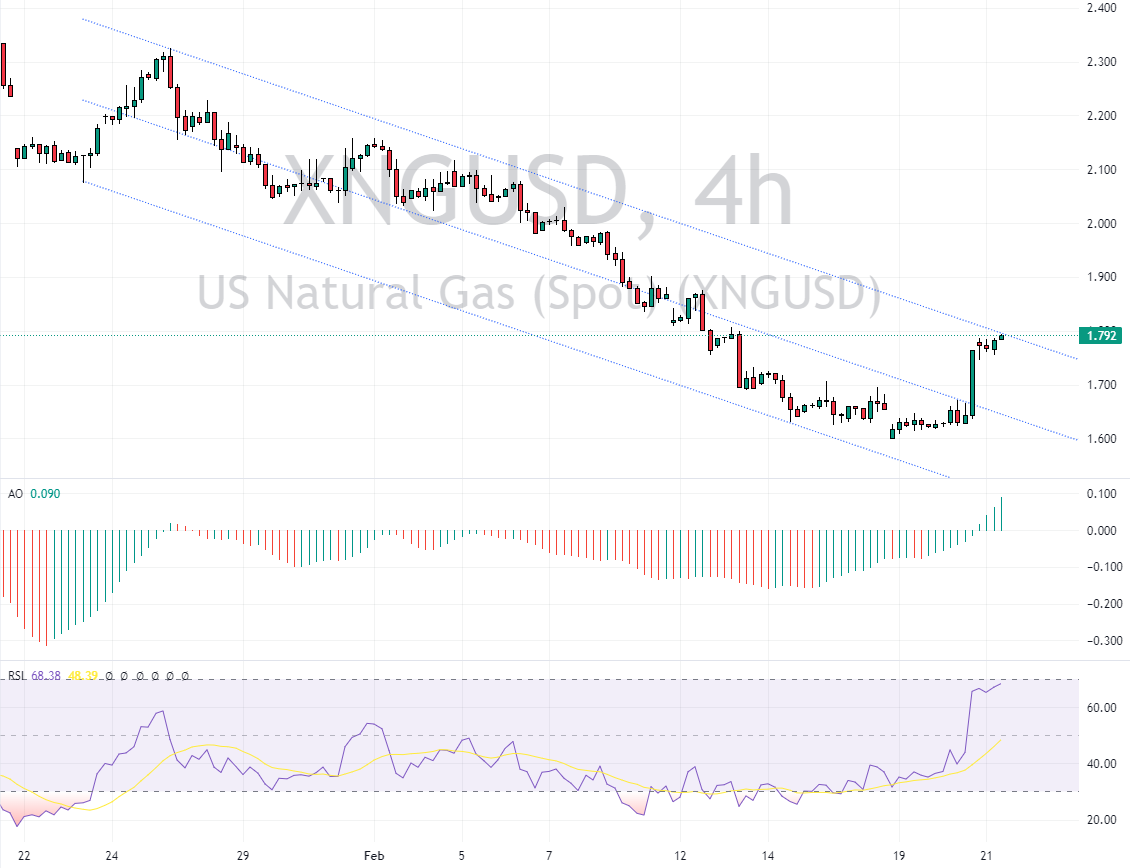U.S Natural Gas Analysis – February-21-2024
U.S. natural gas futures experienced a significant uplift, increasing by 7% to $1.68 per million British thermal units (MMBtu) this Wednesday. This resurgence is primarily attributed to the anticipation of a reduction in production by energy companies in 2024 following a drastic price drop. The beginning of the year saw a steep 25% fall in U.S. natural gas prices, culminating in a three-and-a-half-year low at $1.522/MMBtu.
This decline was fueled by a combination of factors, including record-high production levels, an oversupply in fuel storage, and hot weather conditions. The market’s response indicates a recalibration as investors and producers adjust to the evolving energy landscape.
Supply and Demand Fluctuations: The Impact of External Factors
The natural gas market dynamics have been further complicated by technical setbacks at the Freeport LNG export facility, which have constricted gas flow to LNG export terminals. This disruption is expected to continue until the facility is fully operational, contributing to the fluctuating gas prices. Additionally, the warmer-than-average winter weather across the U.S. has allowed utilities to bolster their gas reserves, with current inventories standing at 15.9% above the typical levels for this time of year.
February saw a notable increase in gas production, averaging 105.8 billion cubic feet per day, an upturn from January’s 102.1 billion cubic feet daily. This surge in output, combined with extended mild weather conditions forecasted until early March, presents a unique challenge for the industry’s supply-demand equilibrium.
U.S. Natural Gas Analysis: Weather Patterns and Energy Predictions
As the natural gas sector navigates through these turbulent times, the role of weather forecasts becomes increasingly critical. Meteorologists anticipate the mild weather to persist until March 6, suggesting a continued impact on natural gas demand. This forecast and the current state of supply could lead to further price volatility. Stakeholders in the energy market are closely monitoring these developments, understanding that weather anomalies and operational disruptions can significantly sway natural gas availability and pricing.
The industry is poised for adjustments as it responds to the global energy dynamics, technological advancements, and shifts in consumer demand. The current situation underscores the complex interplay between natural resources, market forces, and environmental factors, shaping the future trajectory of natural gas trading.







